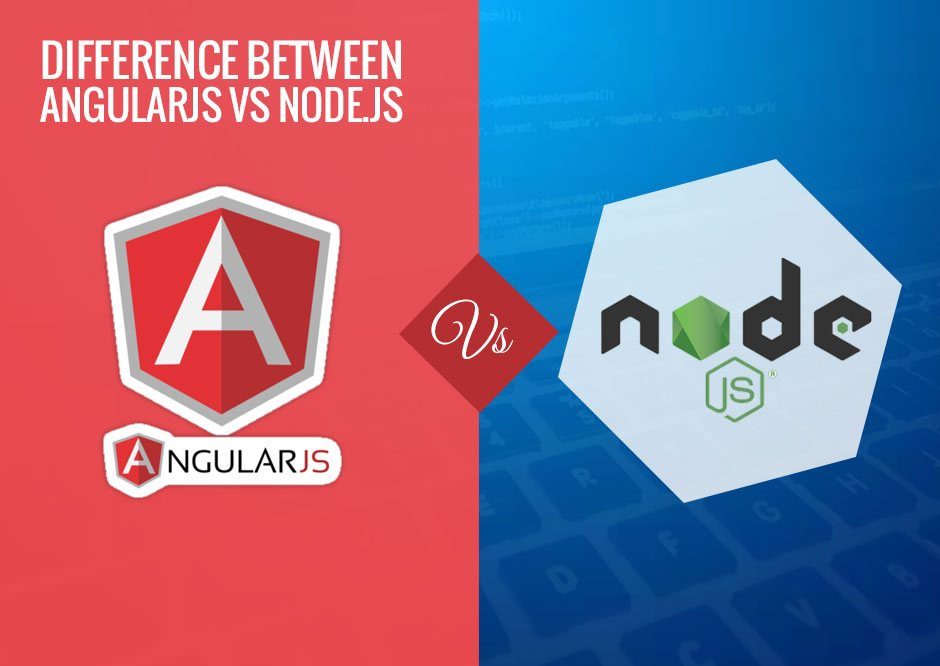The role of a front-end web developer is one of the hottest jobs today. According to the Bureau of Labor Statistics, web developer employments in the US are projected to grow by 27% from 2014 to 2024, which is much faster than the average for other occupations. Also, the average salary in this domain is around $108,874 in the US.
Both NodeJS and AngularJS are popular open-source technologies based on JavaScript. NodeJS is a cross-platform runtime environment, whereas AngularJS is a JavaScript framework.
Angular uses HTML as a template to create dynamic web applications based on MVC, or model-view-controller architectural pattern. HTML, being a template language, makes it easier to get an impressive Angular JS certification.
NodeJs, on the other hand, uses JavaScript as a server-side programming language to build scalable, server-side applications. Therefore, NodeJS and Angular JS differ in terms of functionality, performance, architecture, and usage.
- Core Architecture
Developed by Google as a web development framework, Angular is completely written in JavaScript. This is very different from other frameworks since it follows the syntax rules of JavaScript, as demonstrated in an Angular JS course.
However, NodeJS is a cross-platform runtime environment developed based on the V8 JavaScript engine of Google. It is written not just in JavaScript, but also in other languages like C and C++.
- Installation
Although NodeJS applications can be written in JavaScript, they need to run within the runtime environment on various platforms like Windows, macOS, and Linux. This is possible only if NodeJS is already installed on the respective computer system while creating the development environment.
AngularJS, on the other hand, is not required to be installed as it can embed in the codebase just like other JavaScript files.
- Web Framework
AngularJS is a web framework, while NodeJS is not. Common development tasks can be automated using web frameworks while developing a variety of applications, like websites, web services, web applications, and web application frameworks.
JavaScript programmers cannot make use of NodeJS for the same. Nonetheless, they can choose from a wide range of NodeJS-based frameworks, like Hapi.js, Socket.io, Meteor.js, Sails.js, and Express.js
- Essential Features
Although both AngularJS and NodeJS support MVC architectural pattern, a set of two different features govern the two JavaScript-based technologies.
HTML is a template language for AngularJS and allows developers to extend HTML syntax and express various components of a web application.
Features like data binding, scope, filers, templates, directives, routing, deep linking, and dependency injection simplify the development of single page and dynamic web applications.
At the same time, you get an array of features through the server-side framework NodeJS – essential for developers to build server-side and networking applications. These features are availed by developers to simplify the design of video streaming sites, single-page websites, and similar I/O intensive web applications.
Also, NodeJS drastically improves code execution speed and helps programmers to use a single-threaded event mechanism and asynchronous APIs. Chunks of data can be delivered by web applications without buffering.
- Working with Data
AngularJS further supports two-way data binding in addition to implementing MVC architectural patterns in a different way. The data between a web application’s model and view components gets synchronized automatically due to the bidirectional data binding, but there is no feature to write database queries in AngularJS.
NodeJS, on the other hand, allows programmers to generate database queries in JavaScript. Programmers can thus overcome syntactical differences and create database queries for non-relational databases like MongoDB and CouchDB.
- Programming Language and Paradigm Support
In addition to JavaScript, a number of other programming languages are supported by both NodeJS and AngularJS. While NodeJS supports Ruby, CoffeeScript, and TypeScript, AngularJS supports Dart, CoffeeScript, and TypeScript. In addition, both of them support a number of commonly used programming paradigms.
AngularJS encourages functional, object-oriented, and event-driven programming paradigms, while NodeJS supports functional, object-oriented, event-driven, concurrency-oriented, and sub/pub programming paradigms.
- Use Cases
AngularJS is used widely by JavaScript developers to build client-side and single-page web applications. Interactive and real-time applications can easily be developed using its features.
On the other hand, NodeJS is used for building fast and scalable networking and server-side applications. The cross-platform runtime environment even provides features to build applications that require real-time collaborative drawing or editing.
The client-side framework AngularJS and cross-platform runtime environment NodeJS can run hand-in-hand for better web applications. Isomorphic applications can be simplified by integrating NodeJS and AngularJS. They can even be used as two primary components along with MongoDB and ExpressJS for the MEAN software stack
Build Your Web Application Today
By listing out these differences, we hope to have simplified the process of choosing the best framework for you.
- Apple iPhone 17: A Powerful and Feature-Rich Smartphone - September 22, 2025
- Everything You Should Know About Car Insurance - October 30, 2019
- Track phone activities of your boyfriend through spy apps - October 8, 2019
- Find your home protection at affordable rates - September 25, 2019
- 4 Essential Tips for Getting Cheap Car Insurance - September 19, 2019
- Life Insurance policies – Most important investment of your life! - September 18, 2019
- Top 7 Differences Between NodeJS and AngularJS - August 30, 2019
- Amazing New Angular 8.0 the Top 6 Features Here - August 30, 2019
- Understand All about Medicare Insurance and Its Benefits - August 29, 2019
- Why Health insurance is Considered a Priority? - August 27, 2019





